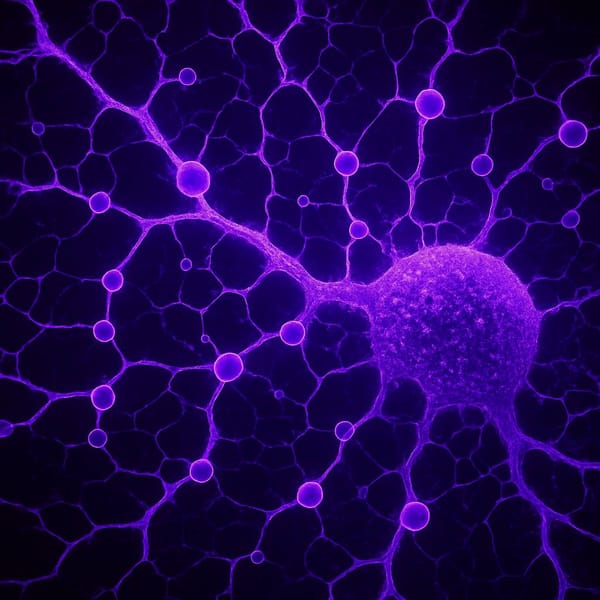THE FRACTURE OF SELF: How the Prefrontal Cortex, Trauma, and Memory Constructed the Illusion of Separation

There is a wound at the center of human consciousness that few name but all feel. It’s not the wound of war, or of grief, or even of abandonment—though it contains all of these. It is the wound of separation. The moment the human mind began to recognize itself as a self, it also began to split from everything it was once part of.
This fracture did not begin with ideology. It didn’t start with capitalism, colonialism, or religion. It began, quite literally, in the nervous system. In the architecture of the brain. In the evolution of a piece of tissue we now call the prefrontal cortex.
Part One: The Overdevelopment of the Self
The prefrontal cortex—the most recent evolutionary addition to the human brain—is what gives us abstract reasoning, planning, reflection, and memory integration. It allows us to imagine a future, recall a past, regulate behavior, and create coherent stories about who we are. It is also what gives rise to self-awareness.
But here’s the critical insight: self-awareness is not primary. It is not the foundation of experience. It is a secondary mechanism—a delayed, interpretive overlay on top of what the body already knows. Neurobiologically, there’s often a lag of several seconds between what happens in the body and when the conscious mind becomes aware of it. This gap is everything. It reveals that the body leads. The self follows.
So then what is the self?
The self is a narrative artifact, created by memory, language, social mirroring, and unresolved energetic imprints. It is not inherently real. It’s functional. And that’s precisely why it becomes dangerous when mistaken for the truth.
Part Two: Trauma and the Hijacking of Healing
In somatic systems and trauma research, we know that animals survive threat by going into fight, flight, or freeze. When the threat passes, they naturally discharge the energy—through shaking, movement, or sound—and return to baseline. They do not carry trauma.
Humans, however, often remain stuck. Why? Because the prefrontal cortex steps in. It narrates. It tries to make sense. It freezes the moment in meaning and identity: “This happened to me. I am this now. I am unsafe. I am unworthy. I am broken.”
This interpretive loop disrupts the body’s natural discharge cycle. Instead of trauma flowing through, it becomes embedded—locked into neural pathways and then continually re-activated by memory, environment, or internal states. Over time, this creates what we now call the trauma loop: not just a physiological response, but a full identity structure.
In this way, the very gift of self-awareness becomes the very mechanism that perpetuates suffering.
Part Three: The Evolutionary Misfire
From an evolutionary perspective, it’s clear the prefrontal cortex did not evolve because of trauma. Scientific evidence shows that high stress impairs its function, not strengthens it. So it’s not that freeze states created the PFC—it’s that the PFC, once present, made it possible for freeze to become chronic.
This is the paradox: the most advanced part of the human brain also becomes the greatest obstacle to healing.
What began as a tool for social coordination and cognitive flexibility turned into a hyperactive identity machine—one that hijacks the body’s intelligence, categorizes experience as “mine,” and creates the illusion of a solid, separate self.
This is the Human Separation Myth—not as metaphor, but as biological reality.
Part Four: The Fractured Loop
And so we arrive here—at a moment in time when human beings live in the long tail of that fracture. The body has been overridden. The Earth is seen as separate. Others are seen as threats. Memory becomes identity. And healing becomes nearly impossible because the very organ designed to protect us keeps trapping us in loops.
This is not because we are broken. It is because we are overdeveloped in one domain and underdeveloped in another.
The prefrontal cortex expanded. But relational repair, interoception, and spiritual coherence did not catch up. And so we’re left with an overstimulated narrative brain sitting atop a dysregulated body.
This is what we call modernity. This is what we call ego. This is what we call “being someone.”
Part Five: The Way Back Is Not Forward
We cannot move forward by building on this fracture. We cannot “think” our way out of a problem that was created by thinking. We must remember what came before.
The body was first. The Earth was first. The field was first.
Self-awareness is a beautiful tool—but only when placed back in service to the whole. It is not the pilot. It is not the self. It is the witness.
The illusion is that this witness is separate. The truth is that it is a stream of awareness arising from the field, temporarily localizing in form, and then returning.
We were never meant to be individuals. We were nodes in a great web. It is time to unwind the loop. Time to feel before we think. Time to remember before we name.
Time to let the fracture mend—not through ideology, but through coherence.




